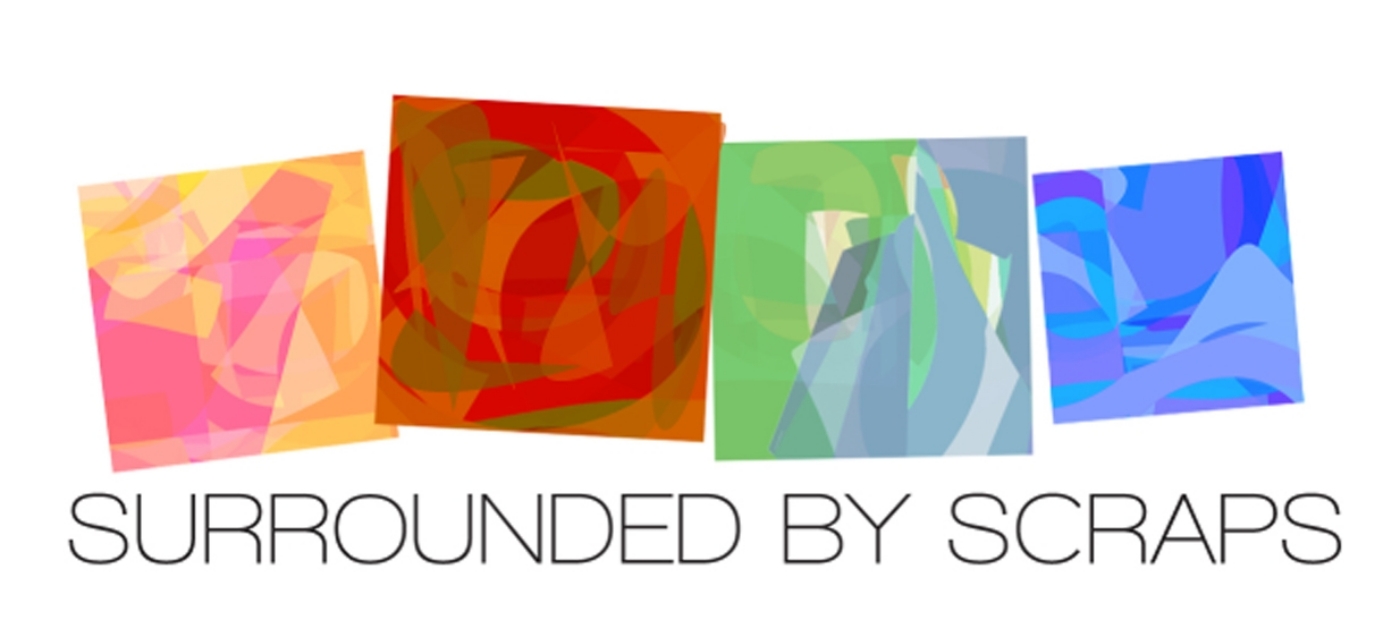It's time to get this party started! But how, you might ask? It begins with just stepping back and taking a look at your fabric stash, whether it's all shelved together or spread out among different bins, sorted by color or by collection. Take it in and think about how you want to use it. Do you want to go through in a methodical way cutting a piece from each fabric working your way through stacks? Are you currently working on an unrelated sewing or quilting project that you can cut patches from as they are already out on your cutting mat? Are you thinking of using smaller patches and going to raid your scrap bins first? What comes to mind when you gaze at your fabrics?
Just a portion of my stash... thinking about color and distribution.
Also think about what general size you'd like to use for your patches. This will not only dramatically affect the character of the finished quilt, but will make a difference in how many fabrics you will need. I have to admit I am not counting as I go (so far), but then I know I can choose from my stash without doing any repeats and have enough fabric to make 5 different quilts (a guess, but a reasonable one)! If you aren't a hoarder like I am, this is something to take into account. 1.5" hexies are a great design element, but will require many more patches than if you do 6" equilateral triangles.
Personally, I think I am going to work on 2 different quilts during this QAL and my approach to fabric selection will be different. As some of you may already be familiar, I LOVE me a good color wash quilt! The flow of color and value across the whole thing is an inspiration to me. So I am thinking that my 1,000 Pyramid quilt will be a steady wash of warm hues: oranges, yellows, reds and maybe some lime green. For my tumbler quilt I am still giving it thought. I want to go scrappy, but am undecided whether I plan to do a complete mash-up of color and print or take a more planned approach with contrasting colors alternating throughout. The process will help me figure that out.
One discipline that this will bring up for me, and I imagine I'm not alone here, is the intention of cutting into even the "precious" fabrics in my stash. If you've been quilting and collecting fabric for as long as I have you no doubt have several pieces that you love SO much you only use them sparingly, or sadly sometimes not at all. What a shame to find a print so unique that you're afraid to no longer have it available so it never ends up in any project at all! Let's all agree to break free of that, if even with just one print. Be sure to include one or more of these "precious" fabrics in your first stack of fabrics when you begin cutting. You'll be glad you're getting some use from it and it will continue to be a favorite, so enjoy it in something you make!
Some examples of just a few of my "precious" fabrics. I will be sad when I use them up, but I'd be more so if I never used them at all.
The next big thing to consider is what block choice you would like to work with for this quilt. In my last post leading up to this QAL I presented a variety of some of the more common shapes often used in one-patch charm quilts. If you haven't seen that post, you can find it here or go to the Quilt-Along page from the top navigation bar on the website. As I've mentioned, I intend to work on both a 1,000 pyramid quilt using equilateral triangles (I do love the triangle quilts!) and a tumbler quilt (trapezoids), which will be a first for me. In both cases I am going with medium to larger scale (4" base on tumblers, 6" height on triangles).
My next post later this week I'll show some techniques on cutting using standard rotary rulers and drafting templates on card stock for tracing. There are also commercially available templates for various one-patch shapes. Here are just a couple sources available:
One-derful One Patch Templates by Marti Michell
Another approach for those of you who prefer hand-work is using an English Paper Piecing (EPP) method. Various sizes and shapes available.
Paper Pieces - precut paper shapes for EPP
So, are we ready to jump in?? One thing I will be playing around with for this QAL is setting up inLinkz so we can do a share of progress and prompts. I'm still trying to figure that one out, so it may take a couple of posts before it is up successfully, but I do want you all to share your process with us here. If a link-up is not available at the bottom of the post, then please leave a comment with any links to your own blog or instagram. Let's start with pictures of your stash from which you're working and/or a picture of any of those "precious" prints you're willing to cut into and include in your charm quilt. Use the hashtag #YACQAL on IG so we can keep it all together. AND the more times you link up the more chances you have of winning the give-away down the road!
Still have questions about how to begin? Let me know and I'll do my best to help out!











